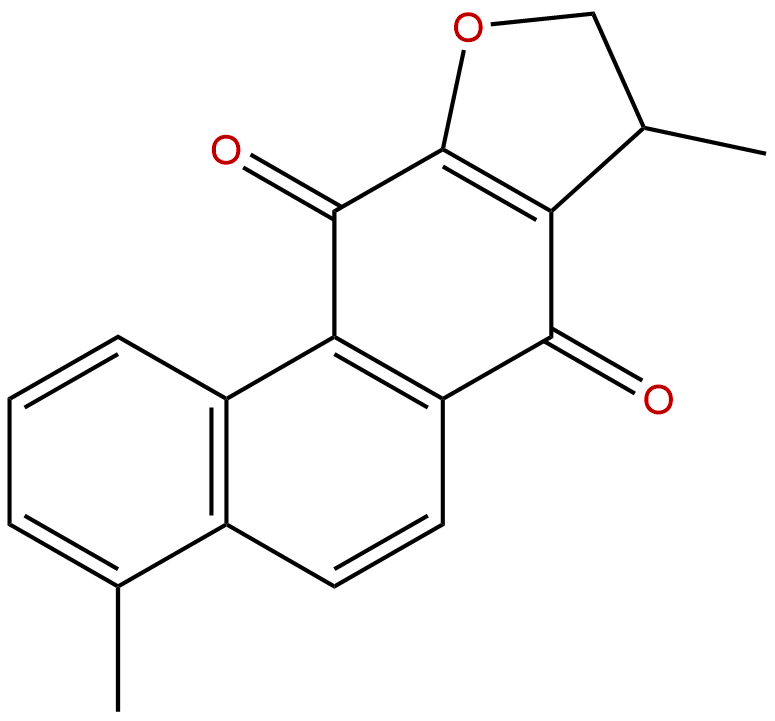Dihydroisotanshinone I Descrtption
Product name: Dihydroisotanshinone I
Synonym name: Catalogue No.: BPF0162
Cas No.: 20958-18-3
Formula: C
18H
14O
3Mol Weight: 278.307
Botanical Source: Physical Description: Red powder
Type of Compound: Diterpenoids
Purity: 95%~99%
Analysis Method: HPLC-DAD or/and HPLC-ELSD
Identification Method: Mass, NMR
Packing: Brown vial or HDPE plastic bottle
Storage: Store in a well closed container, protected from air and light. Put into refrigerate or freeze for long term storage.
Whenever possible, you should prepare and use solutions on the same day. However, if you need to make up stock solutions in advance, we recommend that you store the solution as aliquots in tightly sealed vials at -20℃. Generally, these will be useable for up to two weeks.
The product could be supplied from milligrams to grams, up to kilograms
Inquire for bulk scale.
Descriptions:Dihydrotanshinone I and cryptotanshinone, constituents of a medicinal plant, Salvia miltiorrhiza Bunge, have antibacterial activity against a broad range of Gram positive bacteria, they have non-selectively inhibition against DNA, RNA, and protein syntheses in B. subtilis, suggest that superoxide radicals are important in the antibacterial actions of the agents.[1]
Dihydrotanshinone I induces topoisomerase I-mediated DNA cleavage as strongly as camptothecin; and inhibits the catalytic activity of topoisomerase I by the formation of a cleavable complex and at least in part through the intercalation into DNA.[2]
Dihydrotanshinone I (DI) has cytotoxicity to a variety of tumor cells, DI (with an IC 50 value of approximately 1.28 ug/ml) could inhibit angio-genesis through suppressing endothelial cell proliferation, migration, invasion and tube formation, indicating that DI has a potential to be developed as a novel anti-angiogenic agent.[3]
Dihydrotanshinone I as an inhibitor of NF-κB activation through our research on Salvia miltiorrhiza Bunge, it significantly inhibits the expression of NF-κB reporter gene induced by TNF-α in a dose-dependent manner, also inhibits TNF-α induced phosphorylation and degradation of IκBα, phosphorylation and nuclear translocation of p65; it suppresses the growth of HeLa cells in a xenograft tumor model, which could be correlated with its modulation of TNF-α production, taken together, dihydrotanshinone I could be a valuable candidate for the intervention of NF-κB-dependent pathological conditions such as inflammation and cancer.[4]
References:[1] Lee D S, Lee S H, Noh J G, et al. Biosci Biotechn Bioch, 2014, 63(12):2236-9.
[2] Lee D S, Lee S H, Kwon G S, et al. Biosci Biotechn Bioch, 1999, 63(8):1370-3.
[3 ]Weipeng, Bian, Chen, et al. Acta Bioch Et Bioph Sin, 2008, 40(1):1–6.
[4] Wang F, Ma J, Wang KS, et al. Int Immunopharmacol, 2015, 28(1):764-72.
[5] Zhu D, Tan S. China Pharmacist, 2008, 11(03):301-3.


